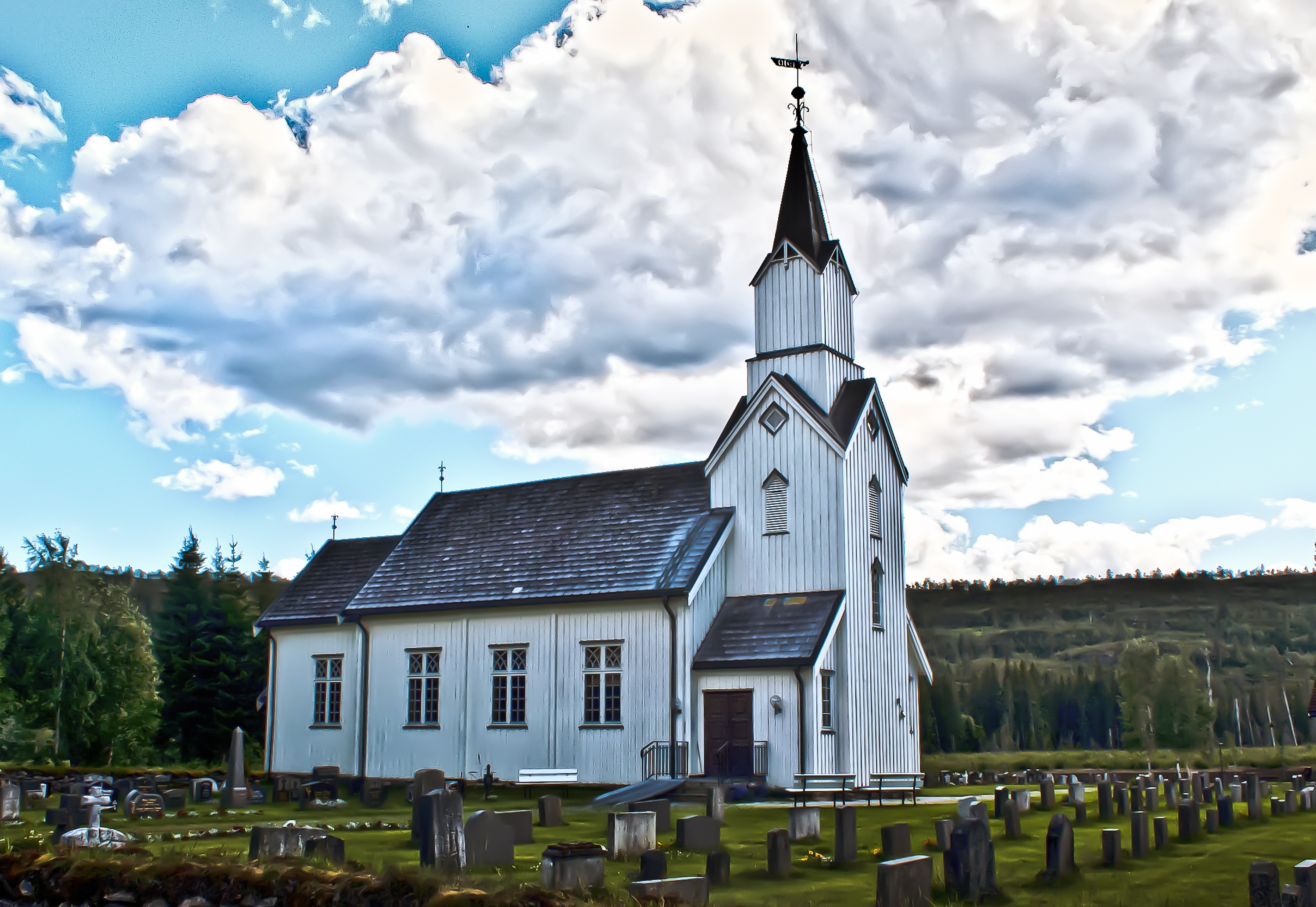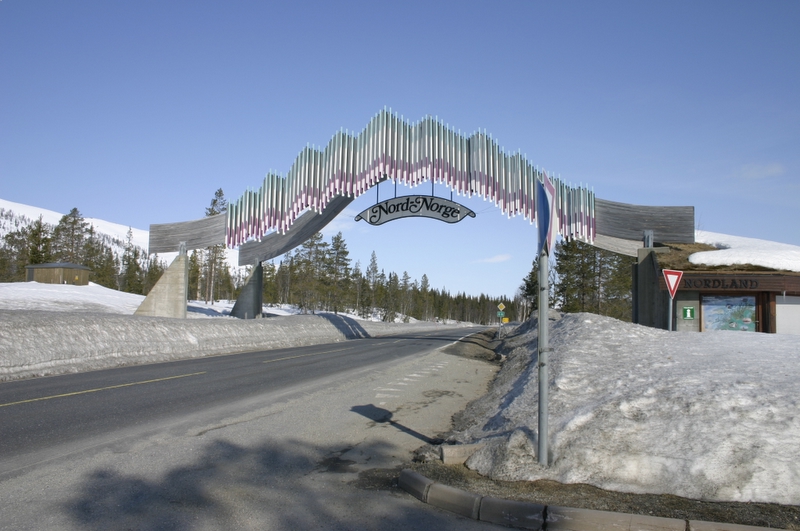|
Trones Church
Trones Church ( no, Trones kirke) is a parish church of the Church of Norway in Namsskogan municipality in Trøndelag county, Norway. It is located in the village of Trones. It is the main church for the Namsskogan parish which is part of the Namdal prosti ( deanery) in the Diocese of Nidaros. The white, wooden church was built in a long church style in 1832 using plans drawn up by the architect Ole Scheistrøen. The church seats about 150 people. History A royal decree on 14 November 1822 granted the people of Namsskogan permission to construct a chapel to serve their area. After some time of fundraising and planning, the church was built and consecrated in 1832. In 1910, the chapel was renovated and rebuilt. During that time, the congregation met in the local school. Later, the chapel was upgraded from a chapel to a parish church status. See also *List of churches in Nidaros This list of churches in Nidaros is a list of the Church of Norway churches in the Diocese of ... [...More Info...] [...Related Items...] OR: [Wikipedia] [Google] [Baidu] |
Namsskogan
Namsskogan is a municipality in Trøndelag, Norway. Namsskogan is located in the upper part of the long Namdalen valley region. The administrative centre of the municipality is the village of Namsskogan. Other villages in the municipality include Brekkvasselv, Smalåsen, Skorovatn, and Trones. The village of Namsskogan lies along the river Namsen in the northern part of the municipality. The European route E6 highway runs through the village. The municipality is the 64th largest by area out of the 356 municipalities in Norway. Namsskogan is the 344th most populous municipality in Norway with a population of 818. The municipality's population density is and its population has decreased by 10.7% over the previous 10-year period. General information The municipality of Namsskogan was established on 1 July 1923 when it was separated from the large municipality of Grong. Initially, the population of Namsskogan was 469. The municipal boundaries have not changed since. On ... [...More Info...] [...Related Items...] OR: [Wikipedia] [Google] [Baidu] |
Deanery
A deanery (or decanate) is an ecclesiastical entity in the Roman Catholic Church, the Eastern Orthodox Church, the Anglican Communion, the Evangelical Church in Germany, and the Church of Norway. A deanery is either the jurisdiction or residence of a dean. Catholic usage In the Catholic Church, Can.374 §2 of the Code of Canon Law grants to bishops the possibility to join together several neighbouring parishes into special groups, such as ''vicariates forane'', or deaneries. Each deanery is headed by a vicar forane, also called a dean or archpriest, who is—according to the definition provided in canon 553—a priest appointed by the bishop after consultation with the priests exercising ministry in the deanery. Canon 555 defines the duties of a dean as:Vicars Forane (Cann. 553–555) from the [...More Info...] [...Related Items...] OR: [Wikipedia] [Google] [Baidu] |
Churches Completed In 1832
Church may refer to: Religion * Church (building), a building for Christian religious activities * Church (congregation), a local congregation of a Christian denomination * Church service, a formalized period of Christian communal worship * Christian denomination, a Christian organization with distinct doctrine and practice * Christian Church, either the collective body of all Christian believers, or early Christianity Places United Kingdom * Church (Liverpool ward), a Liverpool City Council ward * Church (Reading ward), a Reading Borough Council ward * Church (Sefton ward), a Metropolitan Borough of Sefton ward * Church, Lancashire, England United States * Church, Iowa, an unincorporated community * Church Lake, a lake in Minnesota Arts, entertainment, and media * ''Church magazine'', a pastoral theology magazine published by the National Pastoral Life Center Fictional entities * Church (''Red vs. Blue''), a fictional character in the video web series ''Red vs. Blue'' * Churc ... [...More Info...] [...Related Items...] OR: [Wikipedia] [Google] [Baidu] |
19th-century Church Of Norway Church Buildings
The 19th (nineteenth) century began on 1 January 1801 ( MDCCCI), and ended on 31 December 1900 ( MCM). The 19th century was the ninth century of the 2nd millennium. The 19th century was characterized by vast social upheaval. Slavery was abolished in much of Europe and the Americas. The First Industrial Revolution, though it began in the late 18th century, expanding beyond its British homeland for the first time during this century, particularly remaking the economies and societies of the Low Countries, the Rhineland, Northern Italy, and the Northeastern United States. A few decades later, the Second Industrial Revolution led to ever more massive urbanization and much higher levels of productivity, profit, and prosperity, a pattern that continued into the 20th century. The Islamic gunpowder empires fell into decline and European imperialism brought much of South Asia, Southeast Asia, and almost all of Africa under colonial rule. It was also marked by the collapse of the l ... [...More Info...] [...Related Items...] OR: [Wikipedia] [Google] [Baidu] |
Wooden Churches In Norway
Wood is a porous and fibrous structural tissue found in the stems and roots of trees and other woody plants. It is an organic materiala natural composite of cellulose fibers that are strong in tension and embedded in a matrix of lignin that resists compression. Wood is sometimes defined as only the secondary xylem in the stems of trees, or it is defined more broadly to include the same type of tissue elsewhere such as in the roots of trees or shrubs. In a living tree it performs a support function, enabling woody plants to grow large or to stand up by themselves. It also conveys water and nutrients between the leaves, other growing tissues, and the roots. Wood may also refer to other plant materials with comparable properties, and to material engineered from wood, or woodchips or fiber. Wood has been used for thousands of years for fuel, as a construction material, for making tools and weapons, furniture and paper. More recently it emerged as a feedstock for the product ... [...More Info...] [...Related Items...] OR: [Wikipedia] [Google] [Baidu] |
Churches In Trøndelag
Church may refer to: Religion * Church (building), a building for Christian religious activities * Church (congregation), a local congregation of a Christian denomination * Church service, a formalized period of Christian communal worship * Christian denomination, a Christian organization with distinct doctrine and practice * Christian Church, either the collective body of all Christian believers, or early Christianity Places United Kingdom * Church (Liverpool ward), a Liverpool City Council ward * Church (Reading ward), a Reading Borough Council ward * Church (Sefton ward), a Metropolitan Borough of Sefton ward * Church, Lancashire, England United States * Church, Iowa, an unincorporated community * Church Lake, a lake in Minnesota Arts, entertainment, and media * ''Church magazine'', a pastoral theology magazine published by the National Pastoral Life Center Fictional entities * Church (''Red vs. Blue''), a fictional character in the video web series ''Red vs. Blue'' ... [...More Info...] [...Related Items...] OR: [Wikipedia] [Google] [Baidu] |
List Of Churches In Nidaros
This list of churches in Nidaros is a list of the Church of Norway churches in the Diocese of Nidaros which covers all of Trøndelag county in Norway. The list is divided into several sections, one for each deanery in the diocese. Administratively within each deanery, the churches are divided by municipalities which have their own church council and then into parishes which have their own councils . Each parish may have one or more congregations in it. The municipality of Trondheim includes several deaneries within the municipality due to its large population. Historically, the diocese has had many deaneries, but the number of deaneries has been reduced in recent years. In 1995, the old Sør-Fosen prosti was merged with Orkdal prosti and on the same date the old ''Nord-Fosen prosti'' was renamed simply Fosen prosti. On 1 July 2015, the Nærøy prosti, which included the municipalities of Leka, Vikna, and Nærøy, was merged with the Namdal prosti. On 1 January 2020, ... [...More Info...] [...Related Items...] OR: [Wikipedia] [Google] [Baidu] |
Norwegian Directorate For Cultural Heritage
The Directorate for Cultural Heritage ( no, Riksantikvaren or ''Direktoratet for kulturminneforvaltning'') is a government agency responsible for the management of cultural heritage in Norway. Subordinate to the Norwegian Ministry of the Environment, it manages the '' Cultural Heritage Act of June 9, 1978''. The directorate also has responsibilities under the Norwegian Planning and Building Law. Cultural Heritage Management in Norway The directorate for Cultural Heritage Management is responsible for management on the national level. At the regional level the county municipalities are responsible for the management in their county. The Sami Parliament is responsible for management of Sámi heritage. On the island of Svalbard the Governor of Svalbard has management responsibilities. For archaeological excavations there are five chartered archeological museums. History The work with cultural heritage started in the early 1900s, and the first laws governing heritage findings ... [...More Info...] [...Related Items...] OR: [Wikipedia] [Google] [Baidu] |
Consecrate
Consecration is the solemn dedication to a special purpose or service. The word ''consecration'' literally means "association with the sacred". Persons, places, or things can be consecrated, and the term is used in various ways by different groups. The origin of the word comes from the Latin stem ''consecrat'', which means dedicated, devoted, and sacred. A synonym for consecration is sanctification; its antonym is desecration. Buddhism Images of the Buddha and bodhisattvas are ceremonially consecrated in a broad range of Buddhist rituals that vary depending on the Buddhist traditions. Buddhābhiseka is a Pali and Sanskrit term referring to these consecration rituals. Christianity In Christianity, consecration means "setting apart" a person, as well as a building or object, for God. Among some Christian denominations there is a complementary service of "deconsecration", to remove a consecrated place of its sacred character in preparation for either demolition or sale for se ... [...More Info...] [...Related Items...] OR: [Wikipedia] [Google] [Baidu] |
Architect
An architect is a person who plans, designs and oversees the construction of buildings. To practice architecture means to provide services in connection with the design of buildings and the space within the site surrounding the buildings that have human occupancy or use as their principal purpose. Etymologically, the term architect derives from the Latin ''architectus'', which derives from the Greek (''arkhi-'', chief + ''tekton'', builder), i.e., chief builder. The professional requirements for architects vary from place to place. An architect's decisions affect public safety, and thus the architect must undergo specialized training consisting of advanced education and a ''practicum'' (or internship) for practical experience to earn a license to practice architecture. Practical, technical, and academic requirements for becoming an architect vary by jurisdiction, though the formal study of architecture in academic institutions has played a pivotal role in the development of t ... [...More Info...] [...Related Items...] OR: [Wikipedia] [Google] [Baidu] |
Parish
A parish is a territorial entity in many Christian denominations, constituting a division within a diocese. A parish is under the pastoral care and clerical jurisdiction of a priest, often termed a parish priest, who might be assisted by one or more curates, and who operates from a parish church. Historically, a parish often covered the same geographical area as a manor. Its association with the parish church remains paramount. By extension the term ''parish'' refers not only to the territorial entity but to the people of its community or congregation as well as to church property within it. In England this church property was technically in ownership of the parish priest '' ex-officio'', vested in him on his institution to that parish. Etymology and use First attested in English in the late, 13th century, the word ''parish'' comes from the Old French ''paroisse'', in turn from la, paroecia, the latinisation of the grc, παροικία, paroikia, "sojourning in a fore ... [...More Info...] [...Related Items...] OR: [Wikipedia] [Google] [Baidu] |






